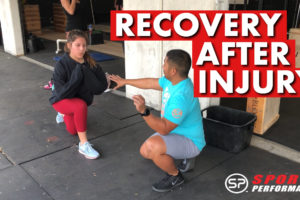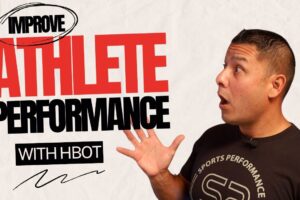
Injuries suck… We’ve all been there before. Even if you haven’t had a major injury, there’s a good chance that you’ve still dealt with nagging aches and pains that you can’t quite shake. It’s especially frustrating when it takes away from exercising and even more so when it affects your day to day.
The first step is being willing to seek out help. In our day and age today, we have a limitless amount of information at our fingertips. This is convenient because you can equip yourself with knowledge but it can also be daunting to sift through all of that information to find what applies to you.
Now why does this matter? Navigating through injuries, pain, and rehabilitation seems complicated but it doesn’t have to be! I’m here to help you set better and more realistic expectations for the rehabilitation process to get you back on track and learn how to manage it in a timely manner.
Expectation #1: Seek out professional help
First things first, seek out a Physical Therapist! We are equipped with a skillset to diagnose, treat, and manage any musculoskeletal problems which do every single day. Just like you would defer to a professional to help you with home or car maintenance, your body is the same! Doctor Google can be helpful but it can only get you so far without a proper assessment.
I had a recent conversation with a client that resonated with me. This client trains hard daily and has suffered from every injury under the sun. He was in for usual maintenance but had a recent pain that required diagnostics to know if he was hurt or injured. It’s a subtle difference but being hurt isn’t serious and allows you to continue training vs. being injured requiring more finesse and skill to make sure it doesn’t continue to get worse.
That’s the ultimate role of a Physical Therapist. We are here to determine if you’re hurt or injured in order to create an actionable plan to return safely and in a timely manner.
Expectation #2: Be PATIENT with your rehabilitation journey
Now that you’re working with a Physical Therapist, you have to understand that we aren’t miracle workers. We can help with managing pain, modifying training, and providing education so you can make informed decisions about your health to stay on the right path. As much as I’d love to resolve everyone’s pain in 1-2 sessions, it truly is not plausible especially if it’s a longstanding, chronic issue. We are always working towards long term solutions and goals over the quick fix and transient relief. Those long term solutions are establishing good habits in exercising regularly, balanced diets, and proper sleep hygeine.
Expectation #3: The journey will have its ups and downs
Rehab is just like training with the course of the journey. As much as we’d like it to be a nice, uniform linear progression it is a bit more chaotic. Embarking on this journey you have to understand that there will be ebbs and flows, ups and downs, two steps forward and one step back. Be patient and trust the process because that road is different for everyone.
Expectation #4: Your injury is unique to you
While embarking on this road, it’s helpful to hear others’ stories and anecdotes of their experiences with injury however, your injury is unique to you. As a Physical Therapist, I use experiences in the past as a reference point but it’s my job to make sure my plan of care, treatment, and education is individualized to you. Pain and injury may have similar themes but prognosis can change based on many contextual factors. Considering the graphs above, some days may be better or worse than others so all of those factors must be considered to make it specialized.
Expectation #5: Injuries are bound to happen regardless
Finally, if you choose to live an active lifestyle then pain and injuries are bound to happen. I think this is a crucial expectation to have with training and sports. Pushing your body with exercise allows it to grow and adapt. Exercise is controlled stress but naturally exercising and playing sports will increase your risk for pain and injury because naturally there is more exposure to risk. There is always work to be done for prehab to promote efficient movement patterns, work on mobility, strength, endurance, and overall physical readiness but fully preventing injuries is not always realistic. Our job is to provide guidance to manage that risk while making sense of the pain process.
As always, we hope this helps! If you have any questions or if you would like to read about certain topics, feel free to send us an email at TeamSP@SportsPerformancePT.com.
-Dr. Jason

STAY CONNECTED
Instagram: CLICK HERE
Facebook: CLICK HERE
YouTube: CLICK HERE
Podcast: CLICK HERE
TUNE IN TO OUR PODCAST












